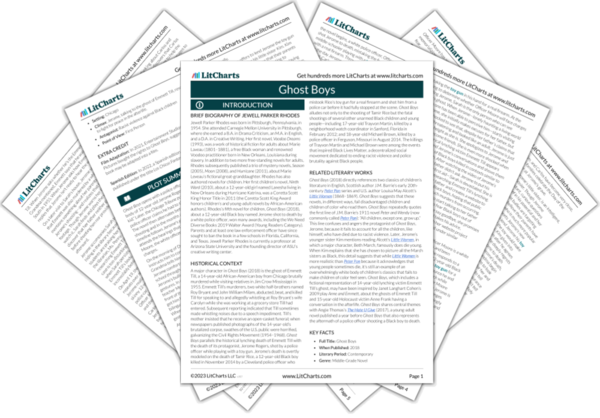AI ToolsNew
Tools to make learning and teaching easier
|
Previous
Dead (p. 63–70)
|
Ghost Boys: Alive (p. 75–80) Summary & Analysis |
Next
Dead (p. 85–191)
|


Upgrade to unlock the analysis and theme tracking for all of Ghost BoysGhost Boys!
Get LitCharts A+